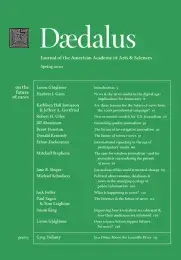The Internet & the future of news
By any measure, the growth of the Internet over the last decade has been astounding. It took the telephone seventy-five years to reach fifty million users; it took television thirteen years. It took the Web just five.1 In a few short decades, the Internet has gone from an obscure technological novelty to something as basic and essential to our lives as electricity. It now connects nearly a quarter of the total world population, having succeeded in reaching the farthest stretches of the globe where simpler necessities, such as clean running water, have not. By 2013, there will be 2.2 billion Internet users worldwide, and the technological trends we are seeing today–rapid-fire growth in broadband, wireless, and video on the Internet–foreshadow an accelerated pace of innovation and breadth of impact that will be felt for generations to come.2
Over the past decade, we have begun to see how the Internet is transforming nearly every industry and aspect of society–from news to entertainment, politics to business, and communications to commerce. The impact of the Internet on journalism is simply a microcosm of the larger phenomenon of dramatic change brought about by the online digital revolution.
The Internet’s ubiquity and easy accessibility offer an immediacy of information that no other news medium can match. This has irrevocably accelerated the pace of the news, as journalists race to stay ahead of each other as well as their audiences’ demands. Similarly, the way people consume the news has changed. People are no longer restricted to their morning papers and the evening news broadcasts. They listen to podcasts on their way to work; check for news updates on their cell phones; watch, pause, and rewind live video newsfeeds on the Internet; and read and comment on blogs at the office, the gym, or the corner coffee shop.
Even more significantly, the Internet has endangered the concept of one-way news, be it in print or broadcast. News is now personalized and interactive; the audience is taking charge. Viewers choose from more sources of news than ever before. They share news stories with their social networks, helping to dictate a story’s distribution. They shape the discourse and coverage of the news. And more and more, they are helping to capture, write, and share the news themselves over the Internet. . . .
